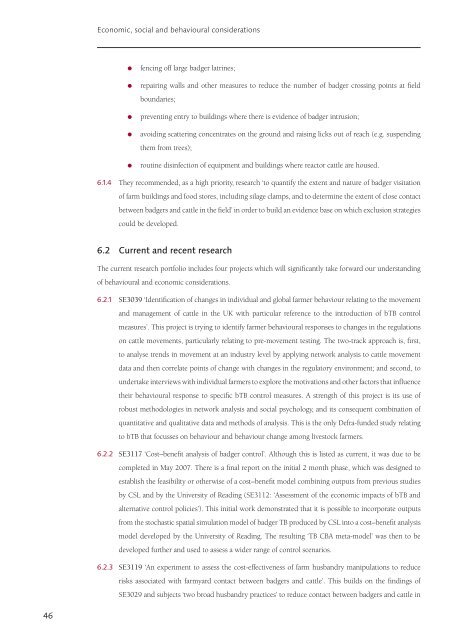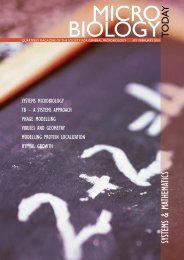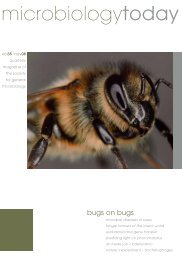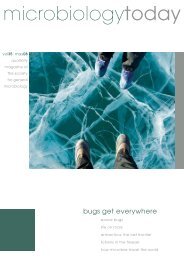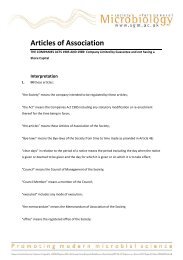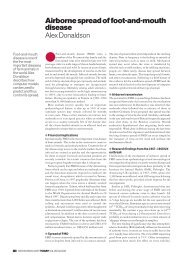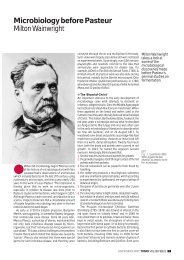final report - ARCHIVE: Defra
final report - ARCHIVE: Defra
final report - ARCHIVE: Defra
Create successful ePaper yourself
Turn your PDF publications into a flip-book with our unique Google optimized e-Paper software.
Economic, social and behavioural considerations<br />
fencing off large badger latrines;<br />
<br />
<br />
<br />
<br />
repairing walls and other measures to reduce the number of badger crossing points at field<br />
boundaries;<br />
preventing entry to buildings where there is evidence of badger intrusion;<br />
avoiding scattering concentrates on the ground and raising licks out of reach (e.g. suspending<br />
them from trees);<br />
routine disinfection of equipment and buildings where reactor cattle are housed.<br />
6.1.4 They recommended, as a high priority, research ‘to quantify the extent and nature of badger visitation<br />
of farm buildings and food stores, including silage clamps, and to determine the extent of close contact<br />
between badgers and cattle in the field’ in order to build an evidence base on which exclusion strategies<br />
could be developed.<br />
6.2 Current and recent research<br />
The current research portfolio includes four projects which will significantly take forward our understanding<br />
of behavioural and economic considerations.<br />
6.2.1 SE3039 ‘Identification of changes in individual and global farmer behaviour relating to the movement<br />
and management of cattle in the UK with particular reference to the introduction of bTB control<br />
measures’. This project is trying to identify farmer behavioural responses to changes in the regulations<br />
on cattle movements, particularly relating to pre-movement testing. The two-track approach is, first,<br />
to analyse trends in movement at an industry level by applying network analysis to cattle movement<br />
data and then correlate points of change with changes in the regulatory environment; and second, to<br />
undertake interviews with individual farmers to explore the motivations and other factors that influence<br />
their behavioural response to specific bTB control measures. A strength of this project is its use of<br />
robust methodologies in network analysis and social psychology, and its consequent combination of<br />
quantitative and qualitative data and methods of analysis. This is the only <strong>Defra</strong>-funded study relating<br />
to bTB that focusses on behaviour and behaviour change among livestock farmers.<br />
6.2.2 SE3117 ‘Cost–benefit analysis of badger control’. Although this is listed as current, it was due to be<br />
completed in May 2007. There is a <strong>final</strong> <strong>report</strong> on the initial 2 month phase, which was designed to<br />
establish the feasibility or otherwise of a cost–benefit model combining outputs from previous studies<br />
by CSL and by the University of Reading (SE3112: ‘Assessment of the economic impacts of bTB and<br />
alternative control policies’). This initial work demonstrated that it is possible to incorporate outputs<br />
from the stochastic spatial simulation model of badger TB produced by CSL into a cost–benefit analysis<br />
model developed by the University of Reading. The resulting ‘TB CBA meta-model’ was then to be<br />
developed further and used to assess a wider range of control scenarios.<br />
6.2.3 SE3119 ‘An experiment to assess the cost-effectiveness of farm husbandry manipulations to reduce<br />
risks associated with farmyard contact between badgers and cattle’. This builds on the findings of<br />
SE3029 and subjects ‘two broad husbandry practices’ to reduce contact between badgers and cattle in<br />
46


